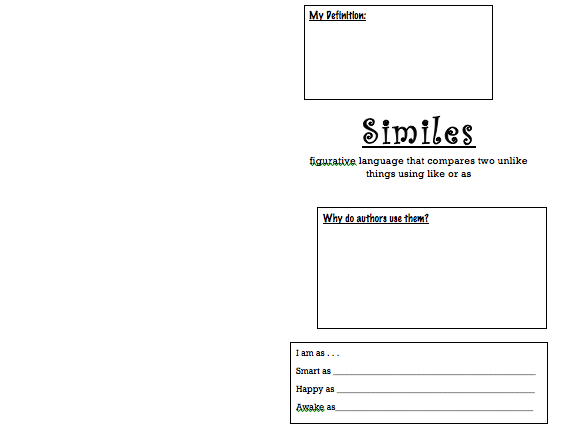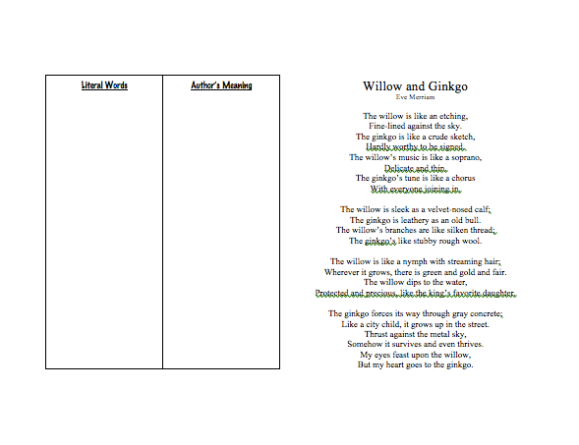During February vacation when other students in our district were hanging out on the couch playing video games, our students were in school working hard to prepare for out ELA state testing! I spent the week guiding fifth graders through a poetry mini-unit. Students created foldables in order to deconstruct, write, and locate similes and metaphors. I hoped that this experience would help them develop a deep understanding of figurative language as well as why authors use figurative language. I was thrilled to notice students enjoying the poems I selected for this mini-unit and loved hearing students try on their poetic voices while writing figurative language!
After researching educator websites, blogs, pintrest, and reviewing poems, I created the following pages to help me teach similes. When photocopied single sided to double sided they can be put together to create a booklet. I used these materials to design lessons where students found similes, determined the literal and figurative meanings of similes, wrote their own similes and drew images that similes evoked in the poem “Willow and Ginkgo” by Eve Merriam.

This is the cover. We came back to fill in the definition and purpose of similes at the end of the unit. I was interested to see what students had learned during the week.

Left: students examined the literal words and the author’s intended meaning in four similes. Right: Students used the similes in the poem “Willow and Ginkgo” to visualize and draw a picture of each of the trees.

Left: Prior to reading “Willow and Ginkgo,” students drew a picture of a Willow and a Ginko. They had no idea what the trees look like so they were excited to use Eve Merriam’s words to picture the trees! Right: Students transformed cliche similes by re-writing them into similes that evoke powerful mental images.
